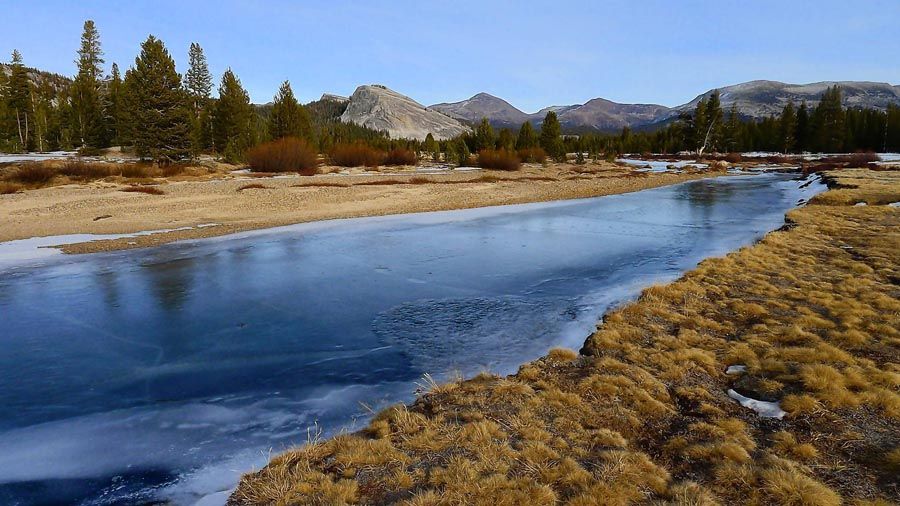Kiwithrottlejockey
Admin Staff
XNC2 GOD

Posts: 32252
Having fun in the hills!
|
From the Los Angeles Times....Effects of climate change in California are ‘significant and growing’Environmental shifts, such as higher sea temperatures and shrinking glaciers in the
Sierra Nevada, point to overwhelming evidence of climate change, state scientists say.By TONY BARBOZA | 6:38PM - Saturday, August 10, 2013 The Tuolumne River in Yosemite National Park on January 3rd, 2012, reveals a landscape usually frozen and covered with snow at that time of year. The Tuolumne River in Yosemite National Park on January 3rd, 2012, reveals a landscape usually frozen and covered with snow at that time of year.
Several evidences of climate change that state scientiests cited were from the Sierra Nevada, including reduced spring runoff.
— Photo: Brian van der Brug/Los Angeles Times.CALIFORNIA is feeling the effects of climate change far and wide, as heat-trapping greenhouse gases reduce spring runoff from the Sierra Nevada, make the waters of Monterey Bay more acidic and shorten winter chill periods required to grow fruit and nuts in the Central Valley, a new report says.
Though past studies have offered grim projections of a warming planet, the report released Thursday by the California Office of Environmental Health Hazard Assessment took an inventory of three dozen shifts that are already happening.
"The nature of these changes is that they're occurring gradually, but the impacts are significant and growing," said Sam Delson, a spokesman for the health hazard assessment office, a branch of the California Environmental Protection Agency.
Among the effects detailed in the report: The number of acres burned by wildfires in California has been increasing since 1950, with the three worst fire seasons occurring in the last decade. Sea surface temperatures at La Jolla have risen by about 1.8 degrees Fahrenheit over the last century, twice as much as the global average. Glaciers in the Sierra Nevada are shrinking, and water in lakes, including Lake Tahoe and Mono Lake, has warmed over the last few decades.
The changes associated with global warming can be irregular. Sea level rise in California, for instance, has bucked the global pattern and leveled off over the last two decades, the report notes.
But the overall trend is overwhelming, scientists say.
"These environmental indicators are leaning very dominantly in a single direction that is consistent with the early phases of climate change," said Dan Cayan, a climate scientist at the Scripps Institution of Oceanography and the U.S. Geological Survey who contributed to the report. "It's not something that's 100 years away; it's already starting to play out."
The report also describes some of the ways plants and animals appear to be responding to a warming climate. Butterflies in the Central Valley are emerging earlier in the spring, and Sierra Nevada conifer trees have retreated upslope over the last 60 years, the report says. About half of the small mammals in Yosemite National Park have moved to higher elevations compared with decades ago.
The analysis drew from data and scientific research from throughout the state. It updates a similar statewide inventory released in 2009 but includes 10 additional problems now linked to climate change, including ocean acidification, tree deaths in the Sierra Nevada and zones of higher temperatures within cities that are known as "urban heat islands."• Download the report Indicators of Climate Change in California• Download the Summary Report: Indicators of Climate Change in California• Download the Press Release issued jointly by OEHHA and Cal/EPA• Download an earlier 2009 Climate Change reporthttp://www.latimes.com/news/local/la-me-0811-calif-climate-20130811,0,4664481.story
|
If you aren't living life on the edge, you're taking up too much space!   |
|
|
|
|
|